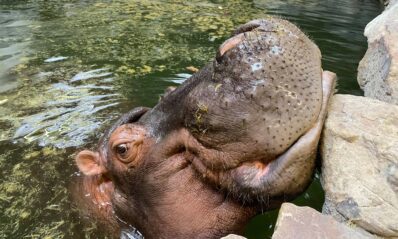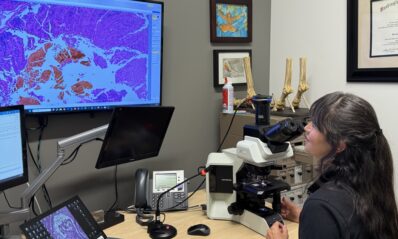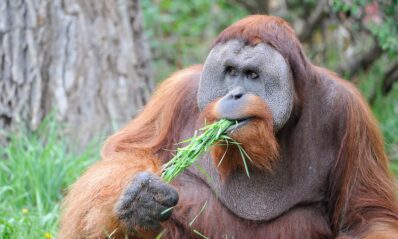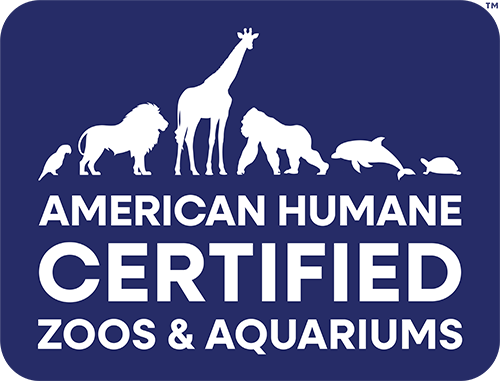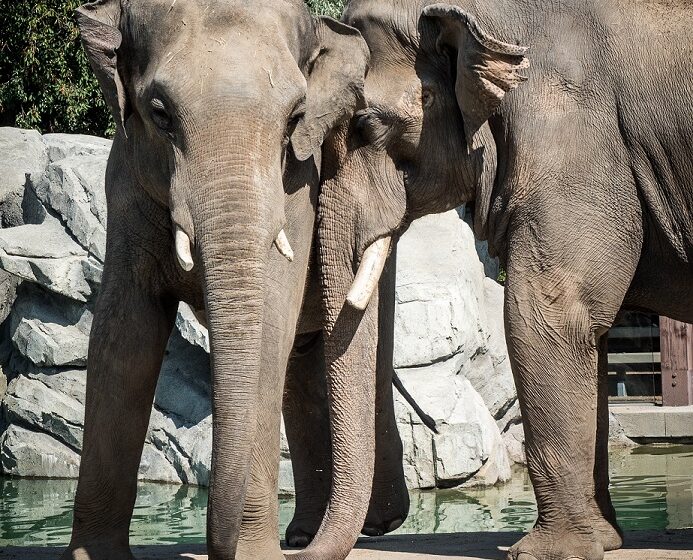
Each Asian elephant life is precious, both to their endangered species and for the keepers in AZA-accredited zoos who care deeply for their wellbeing. But each Asian elephant life-both those in human care and in the wild-can be lost in a matter of days due to Elephant Endotheliotropic Herpesviruses (EEHV), a dangerous virus that affects the species and is responsible for about half the deaths of young elephants in zoos. Denver Zoo is part of the effort to produce effective treatments in the hopes of preventing any more heartbreaking losses.
Asian elephant gestation is notoriously long–22 months to be exact. That’s almost two years of hard work, good luck, and high hopes for the keepers that take care of these elephant herds in zoos. But all of that can be lost in the matter of days due to Elephant Endotheliotropic Herpesviruses (EEHV), a dangerous virus that affects all Asian elephants and is responsible for more than half the deaths of all Asian elephants in human care.
What is EEHV?
For all that we know about EEHV in 2022, there was a time not too long ago that this virus stumped researchers, and was only known as the virus responsible for the death of a young calf at the Smithsonian’s National Zoo in Washington D.C. Researchers there identified the virus as EEHV in 1995. With the help of other Association of Zoos and Aquariums (AZA)-accredited zoos, researchers have made huge strides in learning about and treating EEHV.
When elephants are young, they get exposed to the virus through other herd members. So, all elephants have EEHV present in their systems, but it only becomes a problem when it transforms into EEHV HD (the HD standing for hemorrhagic disease). Young elephants are checked weekly to monitor their viral loads, and when we notice it increasing and causing a need for treatment, that’s when it becomes EEHV HD.
Blood testing is critical to monitor the viral load because EEHV HD itself is hard to spot, and often, when symptoms are noticeable, it’s already too late to treat. Symptoms range from lethargy, stiffness in legs, bruising or discoloration in the mouth and swelling. EEHV HD is a fast-moving disease, and these symptoms can change rapidly, so any response has to be early – and fast.
Denver Zoo Steps Up
Just because EEHV is most often fatal in young calves, Denver Zoo’s herd can play a role in helping research, treat, and hopefully one day prevent this disease. All five of our elephants are trained to stand for blood draws and some of them allow us to take large volumes of blood that can be sent to other zoos for blood transfusions in an emergency. We’re also able to send this blood to researchers studying the virus. Our bulls are never forced to participate in any of the training we do and the blood collection process has become such a positive experience for the bulls that some of them are very willing to stand there and provide these samples.
Blood collection also allows us to store and build a supply of plasma. If there is an emergency at a zoo with an elephant who has the disease, we can send frozen plasma and be ready to collect fresh samples as well. We’ve been called on four times to send plasma across the country to Zoos with elephants fighting EEHV. Although only one of those calves survived, this type of intervention is still remarkable.
The Big Picture
The speed at which EEHV moves is difficult to manage and when we lose a baby elephant, that is a huge loss to the already low population of the endangered species. The more we can collaborate to support the efforts to keep these babies alive and thriving, the better off the entire population is and the closer we get to meeting our goals of saving a species.
Follow us on Facebook, Instagram, TikTok and Twitter for more amazing animal care and conservation stories
